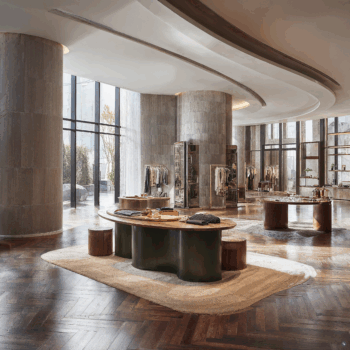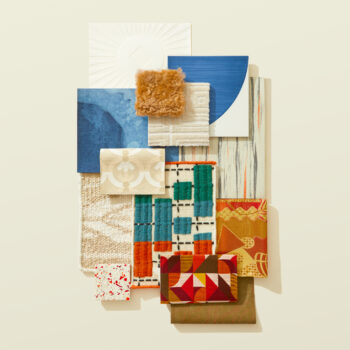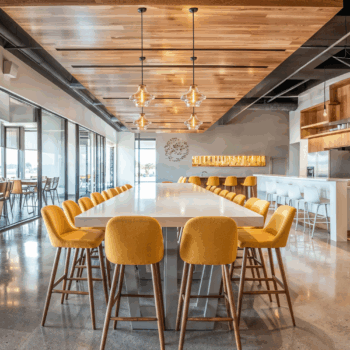
From the bustling spice markets of Marrakech to the vibrant floating markets of Bangkok, open-air markets are more than just places of commerce—they are cultural hubs rich in color, texture, and human connection. These dynamic spaces have long served as inspiration, offering a unique blend of practicality, craftsmanship, and community-driven energy.
Open-air markets are visually dynamic, filled with bold hues and eclectic patterns that create an environment of visual storytelling. The vibrant colors of produce, woven textiles, and handcrafted goods translate into interiors through warm, earthy reds, deep oranges, and rich blues—shades often associated with spices, ceramics, and traditional fabrics. Intricate patterns and layered textures, such as geometric tilework, handwoven textiles, and decorative painted elements, add further depth. Statement pieces like patterned rugs and mosaic tables bring an energetic warmth, evoking the layered, curated aesthetic of these marketplaces.
Beyond color, these markets celebrate the beauty of handcrafted and locally sourced materials, emphasizing authenticity and sustainability. Interiors inspired by these spaces frequently incorporate wood, stone, and woven elements, creating a tactile connection to nature and artisanal craftsmanship. Handcrafted furniture and textiles reflect the artistry found in market stalls, while layered displays and textural contrasts mimic the organic yet thoughtful arrangements that define these vibrant environments.
A defining characteristic of open-air markets is their fluid, accessible layout, designed for easy movement and interaction. This influence carries over into retail through open, flexible floor plans that encourage a natural flow, allowing occupants to navigate the space intuitively. Clustered display areas help establish a sense of discovery, much like wandering through market stalls, where each turn presents a new experience. Seating areas designed for multiple functions encourage gathering and conversation, reinforcing a sense of community. The seamless interaction between different zones mirrors the welcoming, interconnected nature of traditional open-air marketplaces.
Greenery and natural light are essential elements, reinforcing a connection to nature and the surrounding environment. Translate this influence by incorporating lush plants and vertical gardens that enhance warmth and freshness. Maximizing natural light through large windows, skylights, and open-air elements creates a bright, airy atmosphere that reflects the inviting qualities of outdoor markets. Additionally, integrating indoor-outdoor transitions—such as patios, terraces, or breezeways—further strengthens the connection between the built environment and the natural world, fostering a sense of openness and tranquility.
Whether shaping modern retail environments or mixed-use interiors, open-air market influences foster a welcoming atmosphere that blends functionality with an appreciation for craftsmanship and human interaction. By embracing bold aesthetics, natural materials, and thoughtful layouts, designers create spaces that feel dynamic, inviting, and deeply connected to culture—just like the markets that inspire them.
Learn more about indoor shopping experiences with our article on Open-Concept Retail Store.







